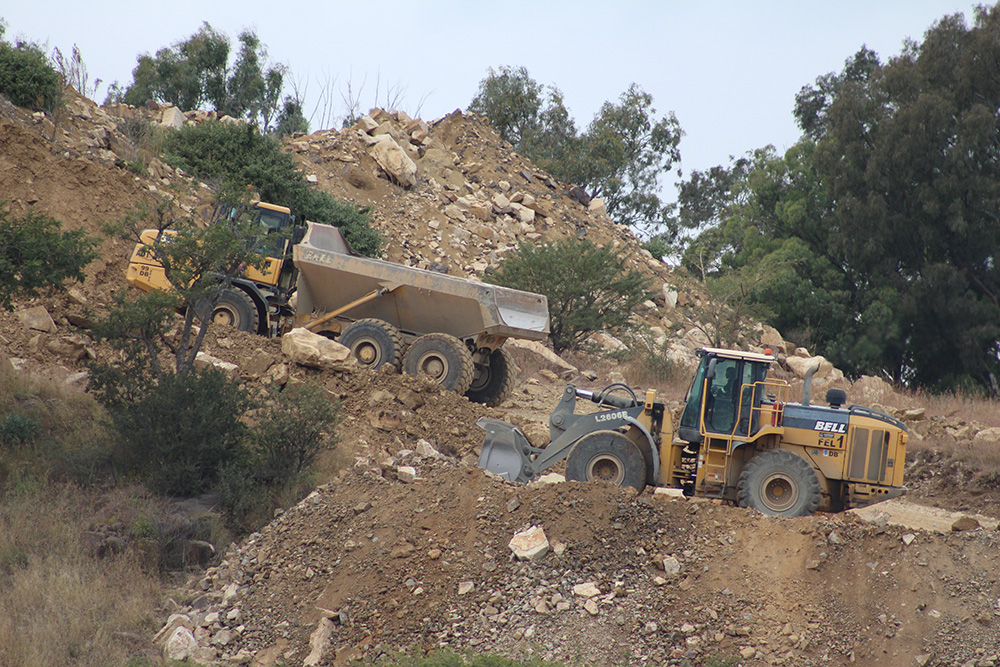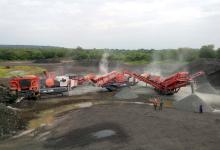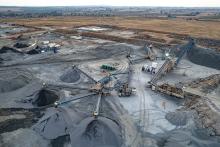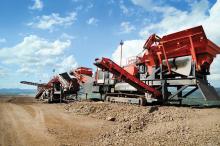
The South African construction industry has been under immense pressure since before the global COVID-19 pandemic hit the country in early 2020. This means that the pandemic has added immense pressure to an already shrinking, yet crucial sector of the economy. With infrastructure development funds redirected to other pressing social and economic issues during the pandemic, the construction sector has been disrupted in an unprecedented manner.
Jeremy Hunter-Smith, CEO of Blurock Quarries, a family-owned quarry located right in the middle of Estcourt, a small town in the uThukela District of KwaZulu-Natal Province, South Africa, says the postponement of several infrastructure projects has resulted in a two-year downturn in the aggregates sector. While there are several transport projects planned for the province, he is concerned that the funds might be redirected to the Durban area where there is an urgent need for rebuilding efforts, following the devastating floods that hit the area in April and May this year.

Taking advantage of the current downtime, influenced by a low growth cycle, the team at Blurock is readying its operation for future growth through a number of upgrades, with the primary section of the plant recently taking priority. “Several Department of Transport and South African National Roads Agency (Sanral) projects are set to be awarded soon. To make the most of the projected infrastructure rollout programme, we have taken advantage of the current slowdown to increase efficiencies in our operation,” he says.
Since taking over as CEO in 2015, Hunter-Smith has successfully embarked on major upgrades to the old plant, to increase capacity, efficiency and flexibility. As part of a growth and development plan formulated in 2016, Blurock invested in new-generation Sandvik crushers and screens to create better efficiencies in the secondary and tertiary stages of the plant. This was followed by further investments in the modernisation of enabling infrastructure –including a new powerline, new substation, new switch room and a new control room, among others.
The first machine to be purchased was the CH440 cone crusher, which was deployed in the tertiary section, replacing two old cone crushers previously installed in this section of the plant. With its new CH440, Blurock opted for Sandvik’s Automatic Setting Regulation control system (ASRi), which enables real-time performance management, allowing the machine to consistently run at optimum levels.
In 2018, focus turned to the secondary crushing section of the plant, with Blurock opting for a Sandvik CS430 cone crusher and a Sandvik SS1633H scalping screen. Both the CS430 cone crusher and the Sandvik SS1633H scalping screen created high levels of flexibility by allowing Blurock to take out some of the products such as handstone, general concrete stone and dump rock material at the secondary crushing stage.
The secondary and tertiary plant upgrades resulted in a significant capacity increase from 100 to about 180 tonnes per hour (tph), confirms Hunter-Smith.

More recently, Blurock has turned its attention to the primary section of the plant, where it has just installed a new Sandvik CJ412 jaw crusher to replace the previous two jaw crushers. “We had a very old system in our primary section which lacked capacity, efficiency and flexibility. Our previous primary jaw crusher was a very old unit, one of the only four brought in the country many years ago before the manufacturer discontinued the range. We also had an old secondary jaw from another manufacturer. The reason for running a double jaw primary section was to create flexibility, as we were able to run either of the two,” explains Hunter-Smith.
Hunter-Smith says investing in the Sandvik CJ412 jaw crusher made sense for a number of reasons. Firstly, this machine is an excellent choice when you need high production at low total cost of operation. It features wedge-setting regulation, making it ideal for applications where the demands change quickly. The low jaw-plate wear means less maintenance too, which maximises productivity and uptime over longer periods.
“The Sandvik CJ412 jaw crusher was also a perfect fit for our existing Sandvik SV1252 vibrating grizzly feeder, which we purchased back in 2017. The two machines have created better capacity and efficiencies at the primary section,” says Hunter-Smith.
He adds that the new jaw processes up to 350tph, accepting a feed size of up to 600mm. To improve productivity and reduce wear, there is a strong focus on optimal blasting in the pit in order to improve fragmentation. Correct fragmentation, says Hunter-Smith, means less oversize causing downtime at the crusher, lower cost crushing and improved tph through the processing plant.
Since the start of the upgrades, Blurock has taken a deliberate decision to standardise its crushers and screens with Sandvik products. From the onset, Blurock engaged the services of a business development consultant, Deon Bosman, who suggested a growth and development plan for the operation. Based on his previous experience, he recommended the Sandvik product.
“Standardisation of equipment is a key focus area for us,” says Hunter-Smith. “A single supplier makes life easier from a spare parts rationalisation perspective, as well as in respect of the training of our staff. It has worked well for us before, when we opted for Bell Equipment as the preferred supplier for our load and haul fleet. Being a rural operation located away from major towns where most of the OEMs are based, we have tried to stick to competent suppliers that can support us, not just with a once-off item, but across the whole operation and for the long haul.”

Apart from the primary plant upgrade, Blurock Quarries is currently building new offices. The main focus of this venture is to comply with the new legislation by separating people from machinery as much as possible. The old offices, says Hunter-Smith, are located close to the weighbridge, posing the risk of interaction between staff and the customer trucks passing through this area. With the new offices, Blurock will also install a new weighbridge, away from the office environment, thus minimising the movement of non-inducted people in the operation.
“We have also been working hard on the appearance of our operation to uplift the visual aspect of Blurock Quarries. For example, we have focused our efforts on cleaning of old equipment. We have also embarked on a massive clean-up operation inside the pit,” says Hunter-Smith.
From a production perspective, the frequency of blasting has been reduced to about one blast every three months, in line with the downward trend in the market. This has given the team enough time to clean up the pit, with a specific focus on historic material.
Inside the pit, a Kobelco 50-tonne excavator is tasked to load four 30-tonne Bell articulated dump trucks hauling run-of-quarry material from the pit to the processing plant. The operation also runs a Finlay mobile crushing and screening train – consisting of a jaw and a cone crusher, as well as two mobile screens and a stacker – supplied by Bell Equipment.
Blurock Quarries mines a dolorite rock with some sandstone intrusions. After the overburden layer, which is stockpiled for rehabilitation, comes a layer of weathered rock, a mixture of shale and sandstone, which is crushed to produce sub-base material (G5 and G7).
Below that formation is a mixture of dolorite and a competent sandstone, which is used to manufacture G2 and general concrete products. Below that layer lies the clean dolorite, used to make road stone (20mm, 14mm and 10mm), as well as 26mm concrete stone and crusher dust. Of note is that the new plant has created new levels of flexibility, with Blurock Quarries now able to produce any special products in line with customer requirements.









